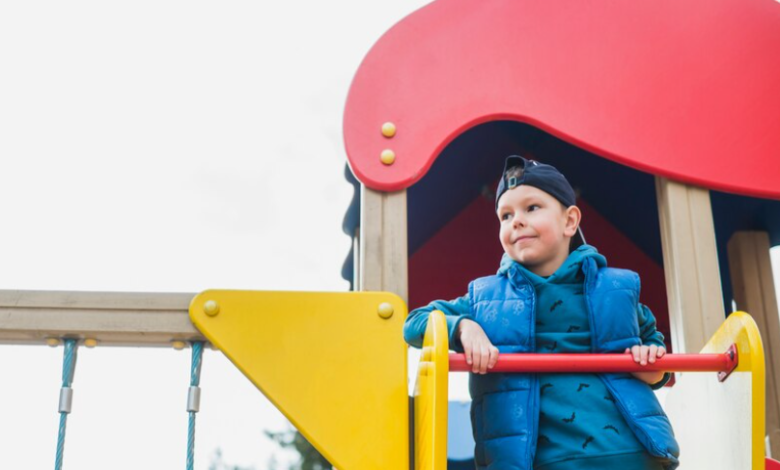Nine Ways To Use A Trampoline Safely

A trampoline is an apparatus used for health, gymnastics, and leisure activities. Thick mesh cloth is stretched over a circular frame to create this item. Because springs hold the fabric in place, you can leap and bounce on top of it.
Both adults and children can have pleasure jumping on a safe trampoline. It functions as a kind of exercise since it raises your heart rate and requires strength from your muscles. Rebounding has grown in popularity for this reason.
Families are increasingly using backyard trampolines. Trampolines are a great way for kids to burn off extra energy, and parents love that they promote physical exercise and motor development. Do trampolines’ advantages truly outweigh their disadvantages, though?
The use of home trampolines is strongly discouraged by the American Academy of Pediatrics (AAP) and the American Academy of Orthopedic Surgeons, particularly for children under the age of six. This is because, according to an AAP research from September 2019, more than 1 million people attended the emergency room for trampoline-related injuries between 2002 and 2011. The majority of patients were under 17 years old.
Serious Injuries Can Happen From Trampolines
In the worst-case situations, trampoline accidents can cause children to become paralyzed, suffer brain damage, or even die. Furthermore, a child’s risk of injury increases with their age and size.
When multiple kids use the trampoline at once, the danger of injury from falls increases significantly. Injuries can also result from falling off the trampoline, hitting its springs or frames, and doing stunts on it incorrectly.
9 Safe Ways to Use Trampolines
If you insist on allowing your children to use a trampoline, you must make sure the right safety measures are taken. Certainly trampolines are dangerous, but a few basic precautions can decrease the dangers of a trampoline extremely,” These are the best parental safety guidelines for trampolines.
1. Just One Person At A Time May Use The Trampoline.
By doing this, the most frequent causes of trampoline injuries are reduced. Establish a communication system with particular phrases that signal somebody to turn it up, or have a time restriction (and a timing device) for each trampoline.
2. Prohibit Flipping And Somersaulting
These unsafe techniques are not appropriate for even older children to try. They raise the possibility of head, neck, and cervical spine traumas that could be fatal or severely incapacitated.
3. Invest In The Appropriate Safety Gear.
Invest in shock-absorbing padding that fully encases the springs, hooks, and metal frame of the trampoline. Please replace the padding right away if you notice any tears, fraying, or other wear indicators. Install a net enclosure as well, and make sure you’ve fitted it correctly by carefully reading the owner’s instructions. Keep children from climbing or hanging from the netting.
4. Give Children A Special Area To Hang Out While They Wait Their Turn.
Although the fully netted trampolines lack that area, you can build one close by so that kids can watch their friends jump. When designing your play area, it’s crucial to keep a child’s perspective in mind. Additionally, make sure the hangout area is far enough away from the trampoline in case someone does fall.
5. Always Have An Adult Supervising
Remember to set up a cozy space where an adult may hang out and provide guidance. Adults should often check the trampoline for damage as well.
6. Come Up With Enjoyable Activities For Youngsters
You’ll need to create alternative enjoyable challenges because you should have a rule forbidding somersaults and tricks. One game that kids could play is memory, in which they have to mimic the motions of the player who came before them.
7. Examine Your Child’s Disposition
Your child will be far safer on a trampoline if you have a listener since many of the injury hazards may be reduced by adhering to a few basic guidelines.
8. Refrain From Using Little Trampolines.
The AAP continues to advise against purchasing mini trampolines since they carry the same safety concerns as full-sized trampolines, despite the appealing notion that you can “downsize” the risk of trampolines by physically shrinking the trampoline.
9. Conduct Research
Verify if injuries sustained from a trampoline are covered by your homeowner’s insurance. For the most recent information on product recalls and customer complaints, frequently check saferproducts.gov for the brand and model of your trampoline.
Conclusion
Trampoline jumping is an enjoyable kind of exercise, but it carries a significant risk of injury. Generally speaking, it’s advised against utilizing one. This covers full-sized and miniature trampolines seen in gyms, parks, and homes.
Never allow a child under the age of six to jump on a trampoline. If they take particular safety measures, older children and adults can use one without risk.
If you purchase a trampoline, make sure to follow the guidelines. Children should always be under adult supervision. In the event that your child is hurt, receive medical attention right away.




